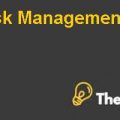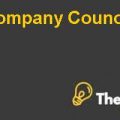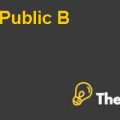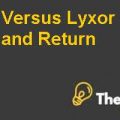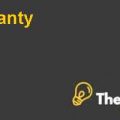Problem Statement
The management of Caribbean Information and Credit Rating Service wants to increase the importance of credit rating in the Caribbean as well as to expand its revenue and profitability. However, despite many efforts it was not able to do so. Its performance was far ahead of the financial projections they had developed and was concerned whether it had to be revised or not. It also lacked experienced resources to get the work done efficiently and increase the credibility of the organization as CRISIL, the rating committee of CariCRIS, had not agreed to transfer their highly talented individuals to Trinidad and Tobago.
The banks and its shareholders do not prefer the agency over its competitor. Even worse is the fact that its shareholders are not willing to get their organizations rated by CariCRIS. In addition to this, the regulators showed no interest in the introduction of ratings linked financial regulations. These hurdles should be solved if CariCRIS wants to develop the capital market in the region.
Introduction
CariCRIS is the Caribbean’s regional credit agency that aims to develop the regional debt markets regional debt markets in the Caribbean. It compares an entity’s credit worthiness to all debt-issuing entities in a defined Caribbean region. This company values ethics and set up its own codes of conduct to allow it to act ethically. The main core values are integrity, independence, Analytical rigor and the team work.
On October 2004, CariCRIS held its first formal launch in Port of Spain. A month after the launch, CariCRIS got its first mandate for a large debt issuance by the National Gas Company of Trinidad and Tobago (NGC).NGC, a cash-rich firm, had mandated S&P, Moody’s and CariCRIS for its foreign-currency valuation. When CariCRIS completed its rating exercise well before the global CRAs, the NGC management commended the team’s speed and professionalism, as easily as the insights it brought to the management interviews and, uniquely, to its rating report. CariCRIS had gained an important and highly satisfied customer.
However, business’ pick-up was slow and launches were expensive affairs. Sinclair was worried about the upfront expenditure. It was suggested that the regions of Bahamas and the Organization of Eastern Caribbean States (OECS) should be exploited. Raghavan adopted a unique approach to develop the business.
He took the responsibility to develop the business. He tried to develop contacts asking potential clients, and using the Caribbean Money Market Brokers Ltd and other brokerages to identify firms seeking to issue bonds and commercial paper. He also met firms that were already rated by S&P, with the view that they would be convinced by the idea of regional rating.
Raghavan began to meet business leaders unofficially in parties. These organized by firms during Christmas and the annual Carnival attended by businessmen, bankers, ministers and bureaucrats. Raghavan was acquainted with the CEOs and CFOs of most firms and banks in T&T within 12 to 15 months, and to some extent, those in Barbados, Jamaica and the OECS. Although they were not willing to commission CariCRIS for a rating mandate however, they were now familiar with the concept of ratings, and that a local CRA had started operations due to which they now have a choice.
With the passage of time, the business grew and now it is already present in more than 10 Caribbean countries, but unable to achieve its budgeted objectives. Although it has many customers and a steady income, however, the management is more concerned about achieving the budgeted results. The current Chief Executive Officer, Vijay Raghavan, is leaving and handing over the operations to Brian Howard. They are still not a preferred rating agency for investors and banks and clients are not pleased with their pricing structure. Regulators and its shareholders have already raised their hands when they were asked to support the agency and its objectivesCaribbean Information and Credit Rating Services Case Solution
SWOT Analysis
The SWOT analysis allows the business to analyze its external environment by identifying its strengths, weaknesses, threats and opportunities. This analysis would allow the agency to develop strategies that would facilitate the achievement of objectives(SWOT Analysis).
Strengths
(The Importance and Value of Organizational Goal Setting)
The agency aims to ensure transparency in the credit rating process and wants to show that its governance, approach and conduct if of the highest standard. Therefore, the transparency has been the most important part of its aims. Moreover, as they had shown their methodologies over the company’s website, it would improve its reputation as a good credit rating agency...............
This is just a sample partial case solution. Please place the order on the website to order your own originally done case solution.


